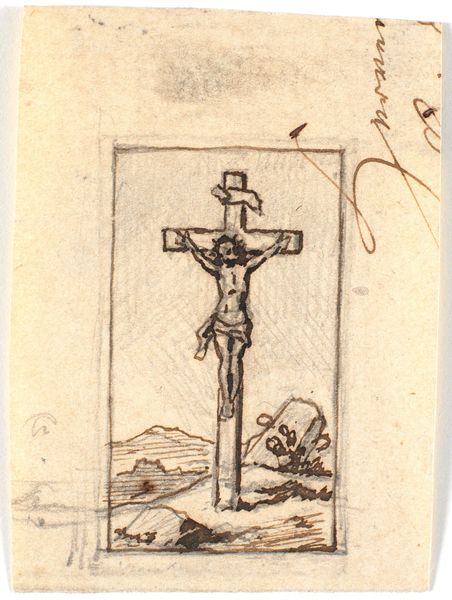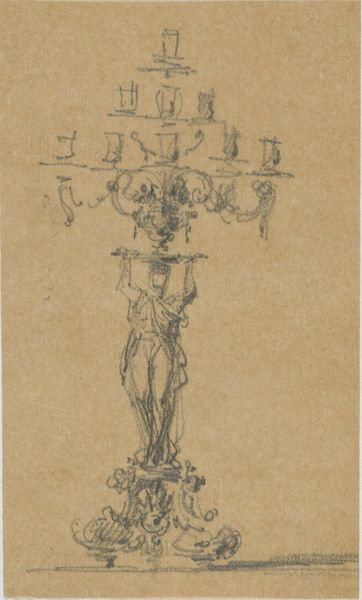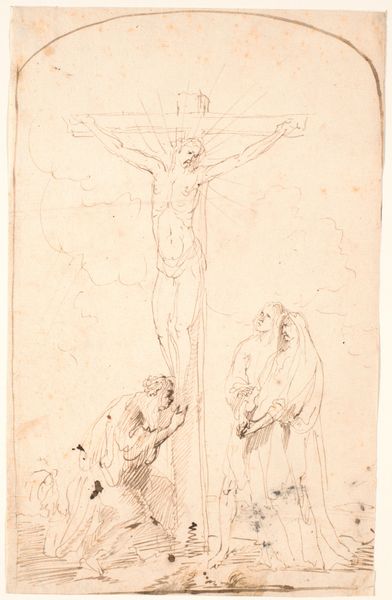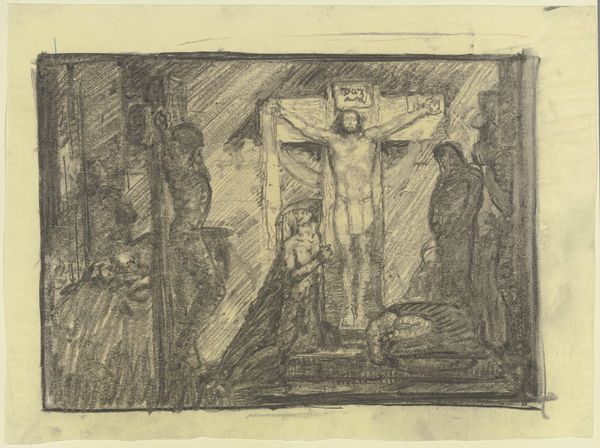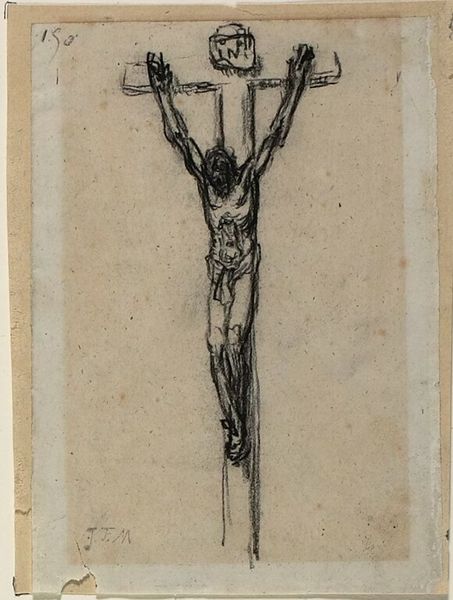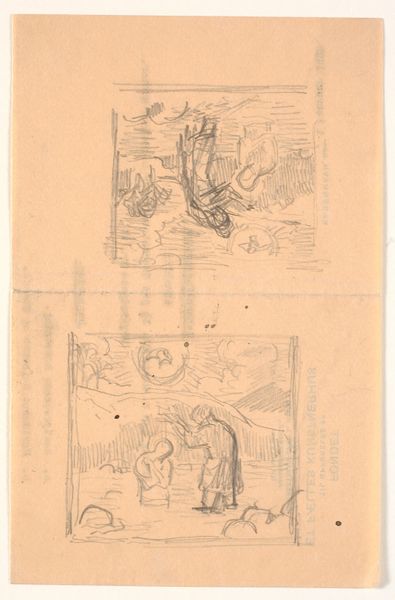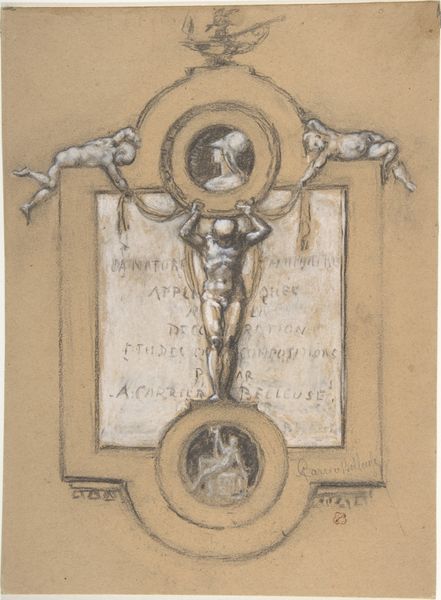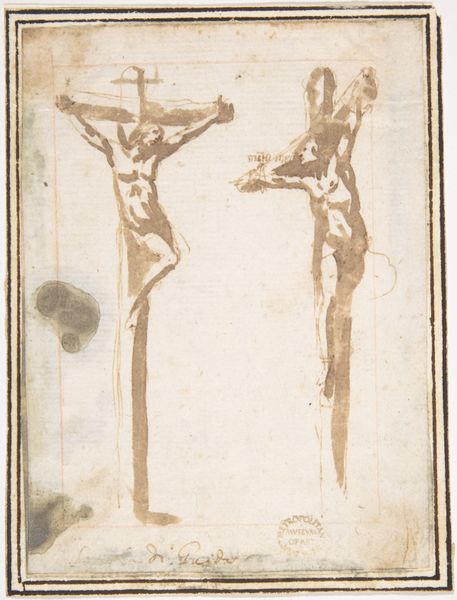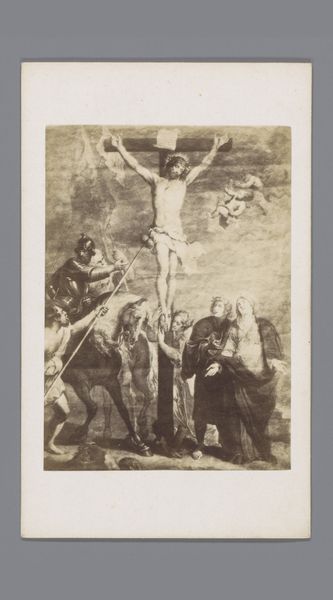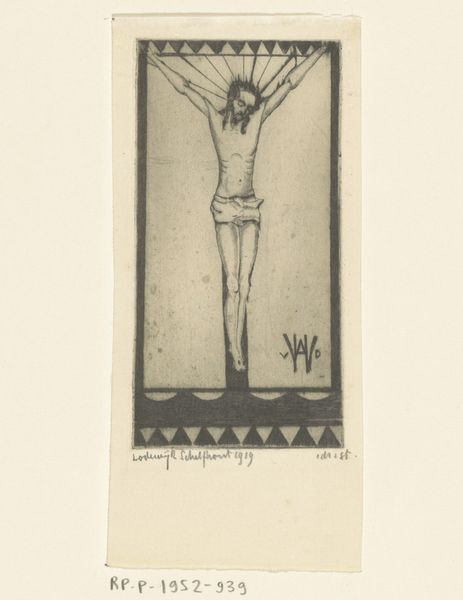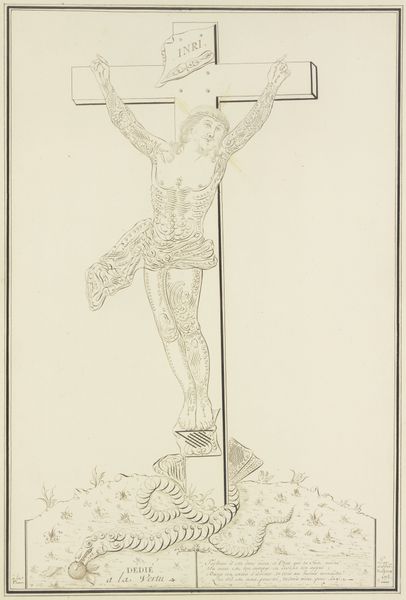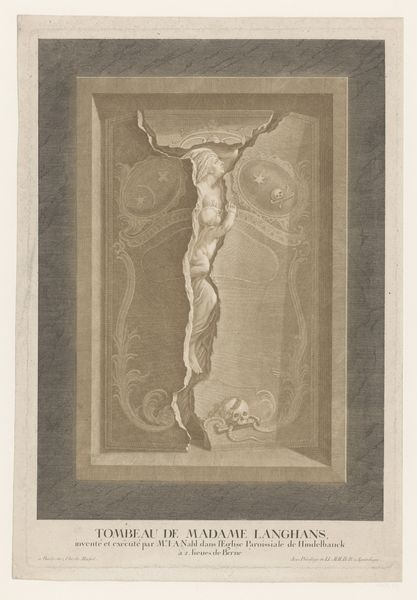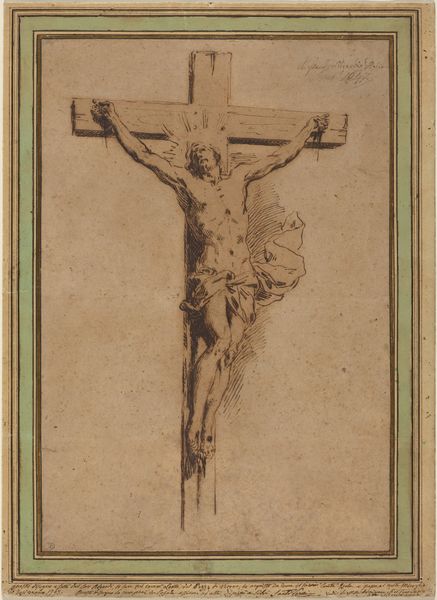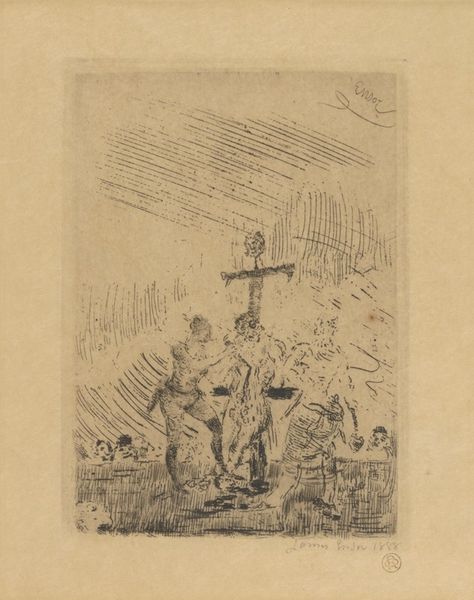
drawing, pencil
#
drawing
#
pencil sketch
#
figuration
#
pencil
#
history-painting
#
academic-art
#
realism
Dimensions: 214 mm (height) x 80 mm (width) (bladmaal)
Curator: Before us is "Christ on the Cross. Studies," a pencil drawing created by Martinus Rørbye in 1847, currently held at the Statens Museum for Kunst. It shows multiple studies of Christ's crucifixion. What’s your initial impression? Editor: Somber, certainly. There's a rawness to the sketch, an immediacy that underscores the emotional weight of the scene. The lines are tentative, almost searching, like Rørbye is grappling with the enormity of the subject matter. Curator: Indeed. It’s interesting to consider this drawing in the context of Rørbye's broader artistic output. He was, after all, primarily a genre painter, known for his scenes of everyday life, especially from his travels. This subject matter, however, aligns Rørbye with broader European academic traditions. Editor: The crucifixion is such a loaded image, of course, thick with layers of meaning. Just the cross itself functions as a potent symbol – sacrifice, redemption, faith, but also suffering and state-sponsored torture. Its ubiquity has dulled the edges for many, I think. Here, in this more skeletal study, you can grasp for the image before its transformation into a commonplace icon. Curator: Exactly, we are given insight into the working process. Academic art often focuses on history painting, and Rørbye likely produced this work as study for a more complex scene of religious art that was common during the 19th century. Editor: Observe too the faint cityscape visible below the crucified Christ in one of the renderings, like a hazy Jerusalem fading into the background. It contrasts that potent single figure, pinning it to place, history and culture. But then at the top of the study, that figure is deconstructed, rendered in several different perspectives, broken and not whole. The viewer feels like we are watching Rørbye thinking through his own faith and uncertainty. Curator: That duality highlights an interesting tension in 19th-century art; a focus on academic realism while still wanting to address intense subjects through historical and biblical paintings. This sketch suggests Rørbye worked toward the proper image but then did not advance it to its final painted rendition. Editor: Ultimately, this is not merely a religious icon; this work serves more like an emotional investigation. Its incomplete quality reveals its artistic and humanistic qualities all at once. Curator: A compelling image to reveal this history of the symbol and the context from which it originates. Editor: Indeed.
Comments
No comments
Be the first to comment and join the conversation on the ultimate creative platform.
